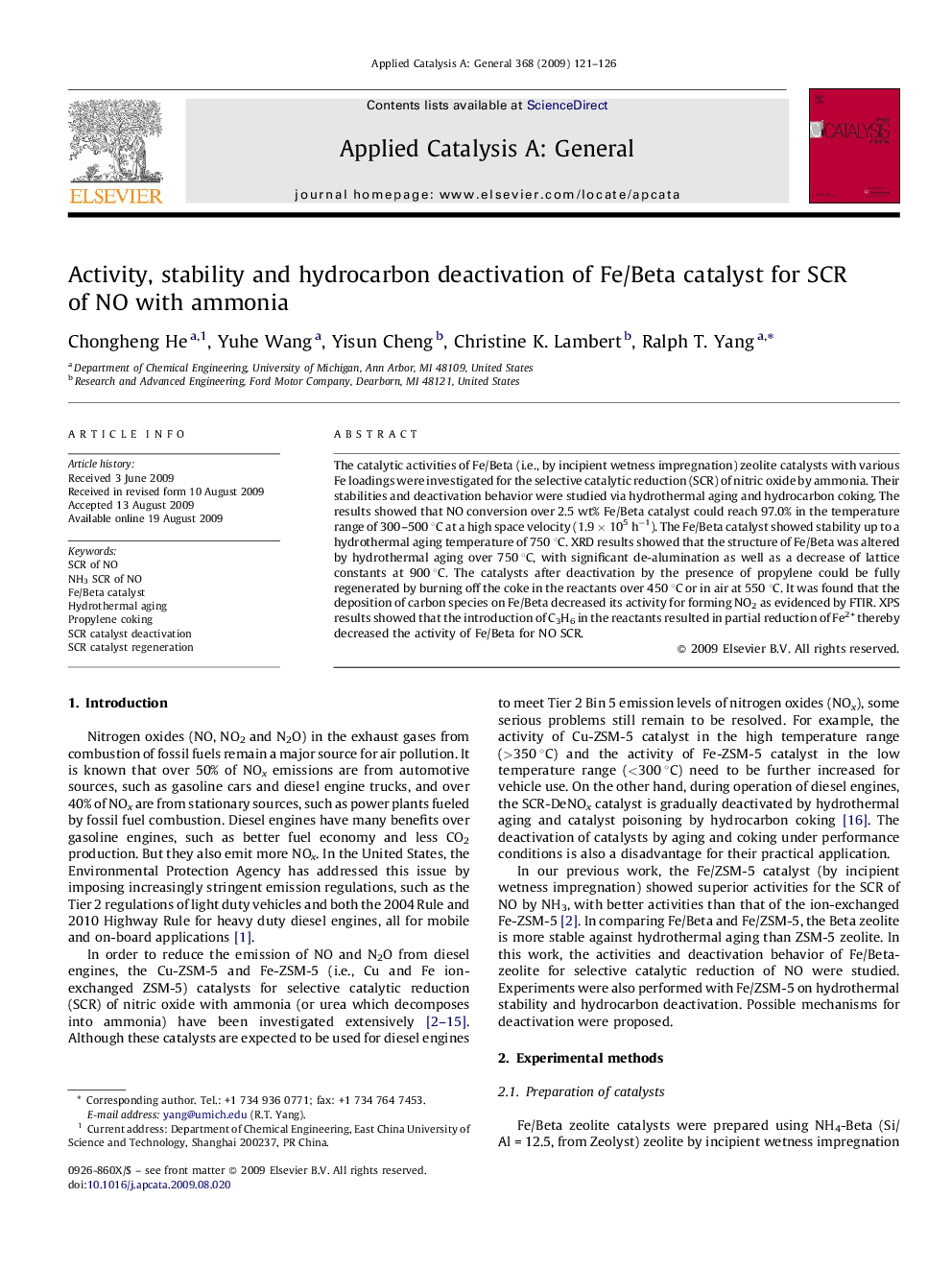| Article ID | Journal | Published Year | Pages | File Type |
|---|---|---|---|---|
| 42506 | Applied Catalysis A: General | 2009 | 6 Pages |
The catalytic activities of Fe/Beta (i.e., by incipient wetness impregnation) zeolite catalysts with various Fe loadings were investigated for the selective catalytic reduction (SCR) of nitric oxide by ammonia. Their stabilities and deactivation behavior were studied via hydrothermal aging and hydrocarbon coking. The results showed that NO conversion over 2.5 wt% Fe/Beta catalyst could reach 97.0% in the temperature range of 300–500 °C at a high space velocity (1.9 × 105 h−1). The Fe/Beta catalyst showed stability up to a hydrothermal aging temperature of 750 °C. XRD results showed that the structure of Fe/Beta was altered by hydrothermal aging over 750 °C, with significant de-alumination as well as a decrease of lattice constants at 900 °C. The catalysts after deactivation by the presence of propylene could be fully regenerated by burning off the coke in the reactants over 450 °C or in air at 550 °C. It was found that the deposition of carbon species on Fe/Beta decreased its activity for forming NO2 as evidenced by FTIR. XPS results showed that the introduction of C3H6 in the reactants resulted in partial reduction of Fe2+ thereby decreased the activity of Fe/Beta for NO SCR.
Graphical abstractThe activities of Fe/Beta catalysts for SCR of NO with NH3 will decrease due to the addition of propylene in the standard reactants at 250 °C. After the propylene was cut off from the reaction gas, the activities of catalysts could be fully recovered by burning off the catalysts in the reactants at higher temperatures.Figure optionsDownload full-size imageDownload as PowerPoint slide
